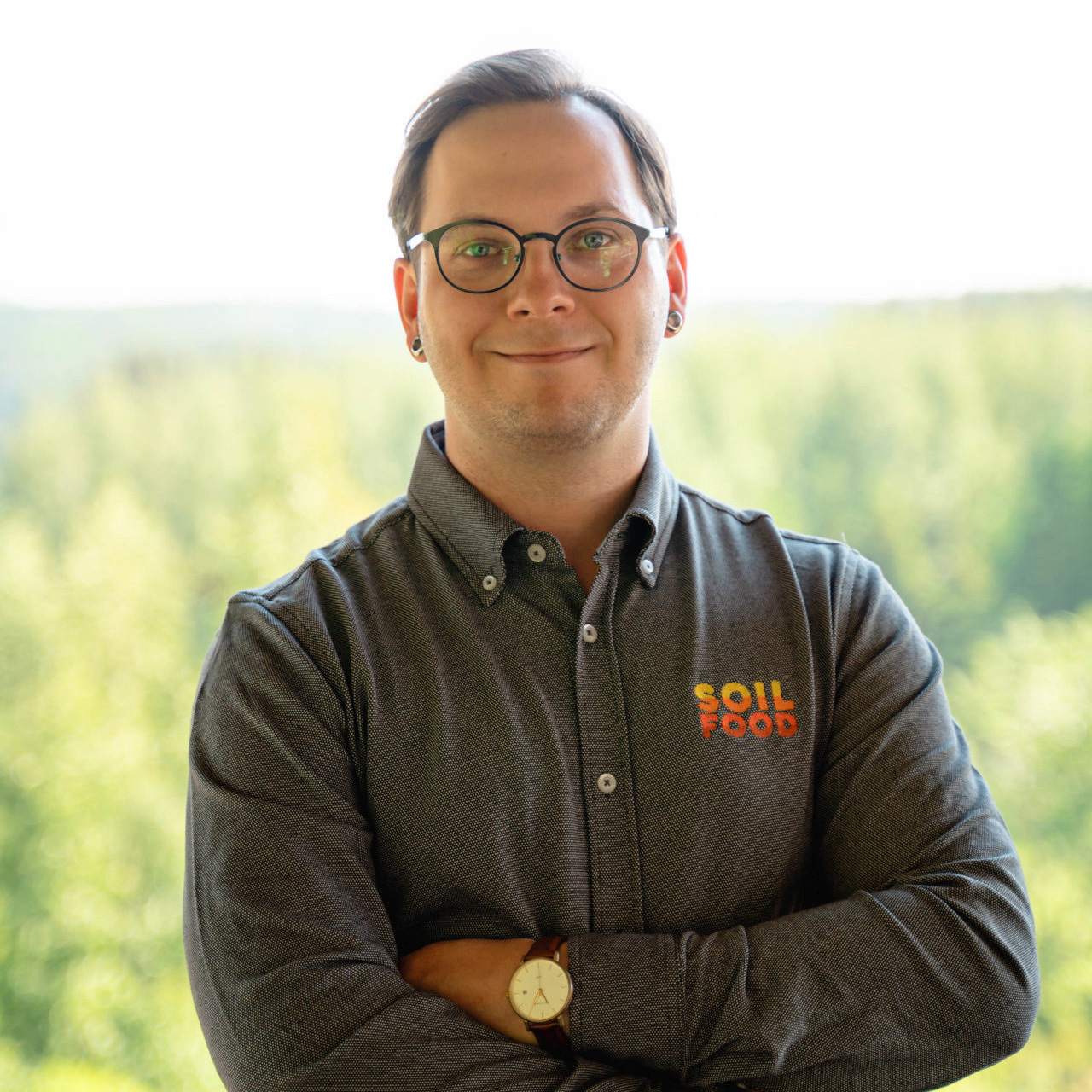10.11.2025
Processing plant that will reduce industrial emissions by over 5 million kilograms a year currently under construction in Loviisa
Read more

Research into soil improvement fibers made from forest industry side streams began as a small side project within a larger initiative. Unexpectedly, it spun off into something much bigger and took off. Last autumn, 181 hectares were treated with soil improvement fibers in the Archipelago Sea catchment area. The treatment improves soil fertility and reduces nutrient runoff into the sea. Fiber application is now also mentioned in the Finnish Government Programme led by Prime Minister Orpo. So, how did this happen?
The first study on the effects of fiber treatment on soil particle and nutrient runoff began in 2015. The idea came from Research Manager Kimmo Rasa of the Natural Resources Institute Finland (Luke) and one of Soilfood’s founders, Juuso Joona. A field trial was set up on Luke’s experimental farm in Jokioinen, where fiber-treated plots were compared with untreated ones under normal crop rotation. The same method had previously been used to study the effects of gypsum treatment on nutrient leaching. The project was part of the Tekes-funded NSPPulp initiative.
The first time that intact soil monoliths were subjected to simulated rainfall in 2016, it became clear that something significant had been discovered: fiber treatment with Soilfood’s soil improvement fibers halved the phosphorus concentration in runoff water.
In addition to yield results and soil impacts, intact soil monoliths — large cores of undisturbed soil — were extracted annually from the plots. These were analyzed in the lab by applying artificial rainfall and examining the characteristics of the water that leached through them.
The breakthrough in 2016 — when phosphorus in runoff was halved — was confirmed in the results of subsequent years. Three follow-up projects, funded by the Finnish Government’s Nutrient Recycling Pilot Programme, allowed researchers to continue annual rainfall simulations. The fibers were reapplied after five years, enabling assessment of the benefits of repeat treatments over time.
The field plots in Jokioinen were monitored until 2024, but by then, fiber research had taken on a life of its own.
The focus shifted from test plots to real-world field-scale applications — first at Lake Tuusula and then at the Savijoki River in Lieto, part of the Archipelago Sea catchment. Instead of simulated rainfall in the lab, nutrient runoff was now measured from actual ditches and rivers flowing from real farmland. These projects were funded by the Ministry of the Environment and coordinated by Luke.
The promotion of soil improvement fibers as a water protection measure has now also been included in the Orpo Government Programme. Under the headline “Pilot area for nutrient recycling in the Archipelago Sea catchment,” the programme outlines that the government will diversify the use of soil amendments, such as gypsum, fiber, and structural lime treatments, giving farmers a range of options to choose the solution that best suits their needs.
In the long run, the use of soil improvement fibers could become a supported water protection measure alongside gypsum and structural lime. In addition to large-scale catchment area projects, various stakeholders have launched numerous smaller research initiatives on the topic. The research has taken on a life of its own and is now becoming part of everyday practice.
Author:

10.11.2025
Read more
News
22.10.2025
Read more
Article
18.9.2025
Read more